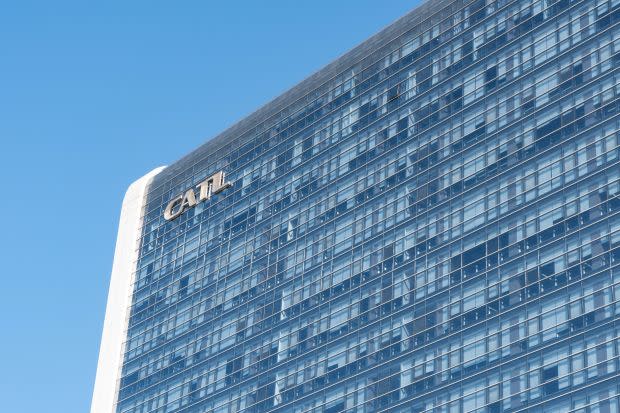Chinese battery giant CATL’s bet on sodium is a hedge against lithium

A Chinese company became the first major car battery manufacturer to unveil a sodium-ion battery last week. CATL, China’s homegrown lithium-ion battery giant, counts brands like Tesla and Volkswagen among its customers, and plans to set up a supply chain for the pioneering technology by 2023.
As clean energy technologies become increasingly important in the global economy, demand for critical materials like lithium, copper, nickel, and cobalt is expected to surge. Lithium is expected to grow fastest, with electric vehicles and battery storage technologies already accounting for 30% of total current demand for the metal, according to the International Energy Agency.
As it becomes harder to source, automakers and battery manufacturers are looking for alternatives to lithium, to hedge against supply disruptions and price spikes. Higher material costs could make lithium batteries more expensive, and lower demand within the industry.
What are sodium-ion batteries?
CATL’s new sodium-ion battery technology is one such promising alternative. As in lithium-ion batteries, ions in a sodium-ion battery flow through electrolytes between the cathode and anode, with the direction of flow depending on whether the battery is in use or charging. The advantages of CATL’s sodium-ion battery, according to the firm, is that it charges quickly and holds up well in cold weather. However, the sodium-ion battery currently has a lower energy density than a lithium-ion one, meaning it stores less energy per unit of volume.
One major reason for turning to sodium batteries is that China is heavily dependent on imports for lithium. For example, some 70% of China’s demand for spodumene, a mineral containing lithium, is imported from Australia. Another reason is that lithium is expensive, and becoming more so. By contrast, sodium is relatively abundant and cheap.
What does this mean for lithium-ion batteries?
China sees a lot of potential in sodium-ion batteries. The technology was prominently listed in an April policy guideline (link in Chinese) from the National Energy Administration as one whose development and commercialization should be prioritized and accelerated. The government also shortlisted (link in Chinese) research on sodium-ion batteries as one of the top scientific advances in China in 2020.
"As a new star of new energy, the sodium-ion battery is accelerating forward on the road of industrialization and may become an opportunity for China to lead a new round of energy revolution," Hu Yongsheng, a researcher at the physics institute at the Chinese Academy of Sciences, told state news agency Xinhua (link in Chinese). Hu is also the chairman of HiNa Battery, a Chinese firm that manufactures sodium-ion batteries for energy storage systems.
Still, sodium-ion batteries are unlikely to replace lithium-ion ones. In fact, CATL last week also unveiled a new battery pack that integrates both lithium-ion and sodium-ion batteries, and the firm said that its production lines can rapidly switch between the two.
Le Xu, senior analyst at energy consultancy Wood Mackenzie, explains that sodium-ion battery production still faces some immediate challenges. "The current sodium-ion battery prices are still high as [it's a] new technology [with] low production. It could take at least two years to see the economies of scale on the cost reduction," he told Quartz. "Lithium-ion technology will still dominate the market.”
Sign up for the Quartz Daily Brief, our free daily newsletter with the world’s most important and interesting news.
More stories from Quartz:
Being your authentic self is actually not ideal for creativity
The world has 193 countries, so why are there 205 teams in the Olympics?
